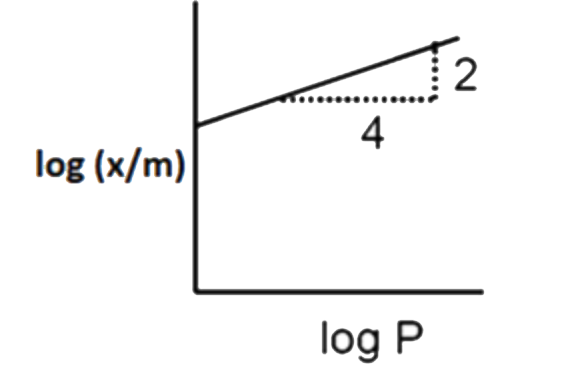Which of the following condition is not reponsible
for shifting the curve towards left in oxyhaemoglobin dissociation curve ?
High pO2
Low pCO2
Low temperature
High H+ ion concentration
The correct Answer is:D
To determine which condition is not responsible for shifting the oxyhemoglobin dissociation curve towards the left, we need to understand the factors that influence this curve. The oxyhemoglobin dissociation curve illustrates how hemoglobin binds with oxygen at various partial pressures of oxygen (pO2).
1. Understanding the Oxyhemoglobin Dissociation Curve:
- The curve shows the relationship between the partial pressure of oxygen (pO2) and the saturation of hemoglobin with oxygen.
- A leftward shift in the curve indicates an increased affinity of hemoglobin for oxygen, meaning hemoglobin binds more readily to oxygen.
2. Factors that Cause Leftward Shift:
- High pO2: When the concentration of oxygen is high, hemoglobin binds more oxygen, shifting the curve to the left.
- Low pCO2: A lower concentration of carbon dioxide (CO2) in the blood leads to a higher pH (less acidic), which also favors the binding of oxygen to hemoglobin, shifting the curve left.
- Low Temperature: A decrease in temperature increases hemoglobin's affinity for oxygen, resulting in a leftward shift.
- Low H+ Concentration: A lower concentration of hydrogen ions (H+) corresponds to a higher pH, which also promotes oxygen binding, shifting the curve left.
3. Identifying the Incorrect Option:
- The question asks for the condition that does not cause a leftward shift.
- High H+ Concentration: This condition would lead to a lower pH (more acidic), which decreases hemoglobin's affinity for oxygen and shifts the curve to the right, not left.
4. Conclusion:
- The correct answer is high H+ concentration, as it does not favor a leftward shift in the oxyhemoglobin dissociation curve.
- The curve shows the relationship between the partial pressure of oxygen (pO2) and the saturation of hemoglobin with oxygen.
- A leftward shift in the curve indicates an increased affinity of hemoglobin for oxygen, meaning hemoglobin binds more readily to oxygen.
- High pO2: When the concentration of oxygen is high, hemoglobin binds more oxygen, shifting the curve to the left.
- Low pCO2: A lower concentration of carbon dioxide (CO2) in the blood leads to a higher pH (less acidic), which also favors the binding of oxygen to hemoglobin, shifting the curve left.
- Low Temperature: A decrease in temperature increases hemoglobin's affinity for oxygen, resulting in a leftward shift.
- Low H+ Concentration: A lower concentration of hydrogen ions (H+) corresponds to a higher pH, which also promotes oxygen binding, shifting the curve left.
- The question asks for the condition that does not cause a leftward shift.
- High H+ Concentration: This condition would lead to a lower pH (more acidic), which decreases hemoglobin's affinity for oxygen and shifts the curve to the right, not left.
- The correct answer is high H+ concentration, as it does not favor a leftward shift in the oxyhemoglobin dissociation curve.
Topper's Solved these Questions
- BREATHING AND EXCHANGE OF GASES BOOK - AAKASH INSTITUTE ENGLISHCHAPTER - BREATHING AND EXCHANGE OF GASES EXERCISE - ASSIGNMENT SECTION - C
50 Videos
- BREATHING AND EXCHANGE OF GASES BOOK - AAKASH INSTITUTE ENGLISHCHAPTER - BREATHING AND EXCHANGE OF GASES EXERCISE - ASSIGNMENT SECTION - D
11 Videos
- BREATHING AND EXCHANGE OF GASES BOOK - AAKASH INSTITUTE ENGLISHCHAPTER - BREATHING AND EXCHANGE OF GASES EXERCISE - ASSIGNMENT SECTION - A
35 Videos
- BODY FLUIDS AND CIRCULATIONBOOK - AAKASH INSTITUTE ENGLISHCHAPTER - BODY FLUIDS AND CIRCULATIONEXERCISE - Assignment Section - D Assertion - Reason Type Questions
9 Videos
- CELL CYCLE AND CELL DIVISION BOOK - AAKASH INSTITUTE ENGLISHCHAPTER - CELL CYCLE AND CELL DIVISION EXERCISE - SECTION-D (Assertion-Reason Type Questions )
10 Videos
Similar Questions
Knowledge Check
The oxygen dissociation curve is
AparabolaBslopeCsigmoidDstright line.Which of the following causes a leftward shift in the oxygen dissociation curve?
AIncreased carbon dioxide concentrationBAn increase in hydrogen ion concentrationCA decrease in pHDAll of the above
O2 dissociation curve is:
View SolutionWhich of the following option is correct for given curve?

View SolutionWhich of the following statements is not true for J-shaped growth curve?
View SolutionWhich of the following statements is not true for J-shaped growth curve?
View SolutionWhich of the following conditions is found in the alveoli which is favourable for the formation of oxyhaemoglobin ?
View SolutionWhich of the following curve is correct for an ideal gas ?
View Solution
